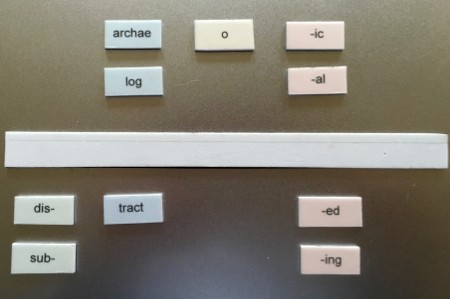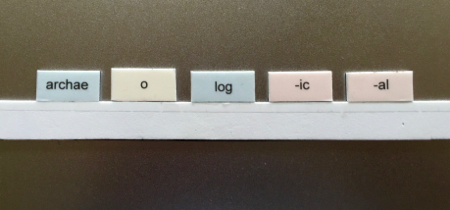
Using the morphology magnets to build vocabulary
When your students learn to recognize the roots, prefixes, suffixes, and connectors in the words they read, they will be able to remember the meanings, spell them correctly, and generalize to unfamiliar words. The morphology magnets are an easy and fun way to build vocabulary, comprehension, and spelling. Here is an example of how to integrate this into your lessons.
- Screen your student’s reading selection for words with Latin or Greek roots.
- Pick a few of those words to go over using the morphology magnets.
- Have the student build up the words you selected, and related ones, using the prefixes, suffixes, and roots. This could be part of the blending drill, or as a “morphemic awareness” exercise.
- Have your student read a paragraph or two with the words from the book.
“Archaeological zoologist” was a phrase from Airborn (by Kenneth Oppel), and here are the morphemes for “archaeological”. The tutor put just a few of the magnets on the “morph board” for the student to use to practice with this word, and one with Latin roots.
Group the pieces, with the prefixes on the left, the roots (and connectors) in the middle, and the suffixes on the right, so the students can quickly find the pieces. Say the word and have the student find the piece to build up the whole word. Start with the root and add prefixes, suffixes, connectors, and additional roots, as needed.
After the student lines up the morpheme magnets to assemble the word, the board will look something like this:

If you use guided discovery, this is a great opportunity to have the student reason out the meaning of unfamiliar words, based on the meanings they already know and the context in their reading. With either direct instruction or guided discovery, you will find that students generalize the skills you practice with these magnets and learn to read, comprehend, and spell unfamiliar words.
